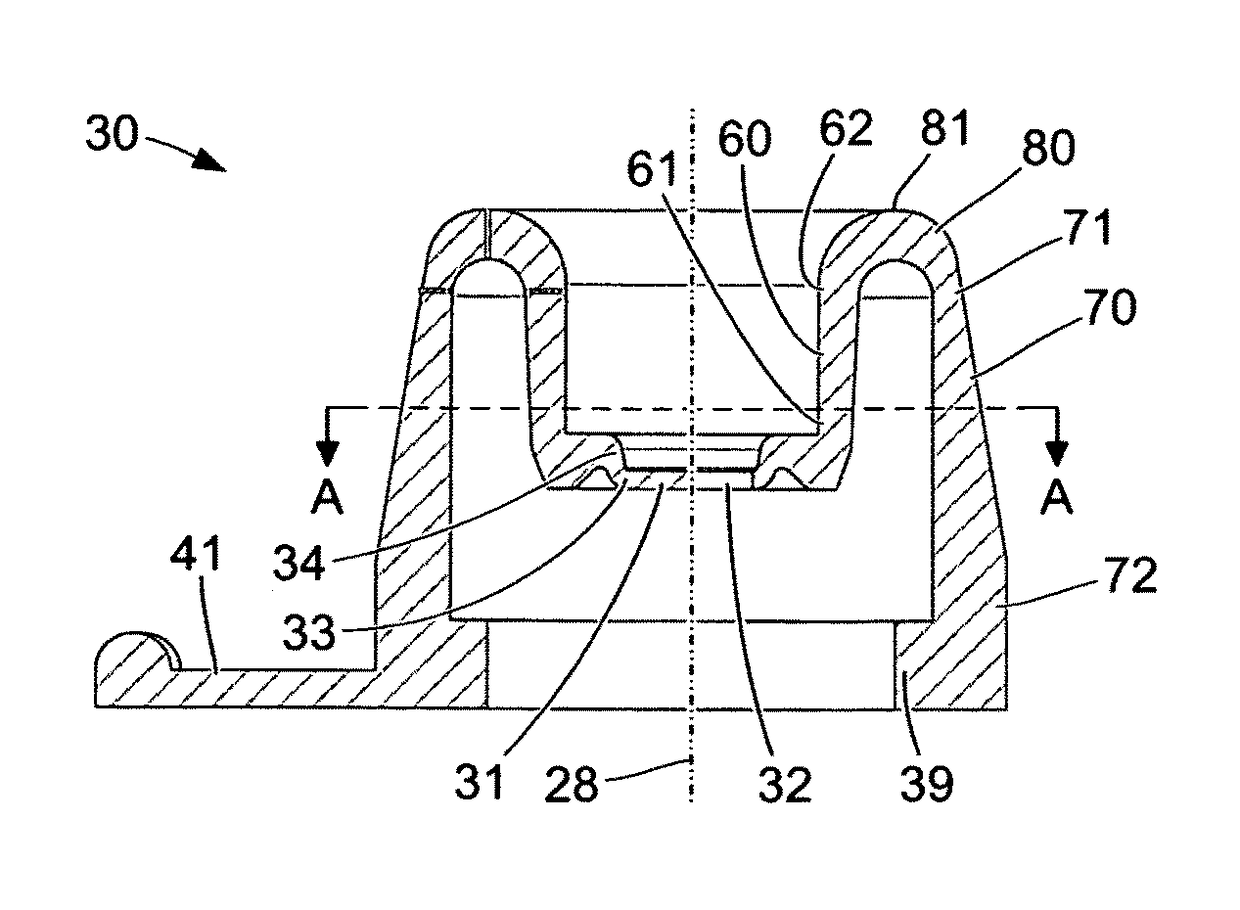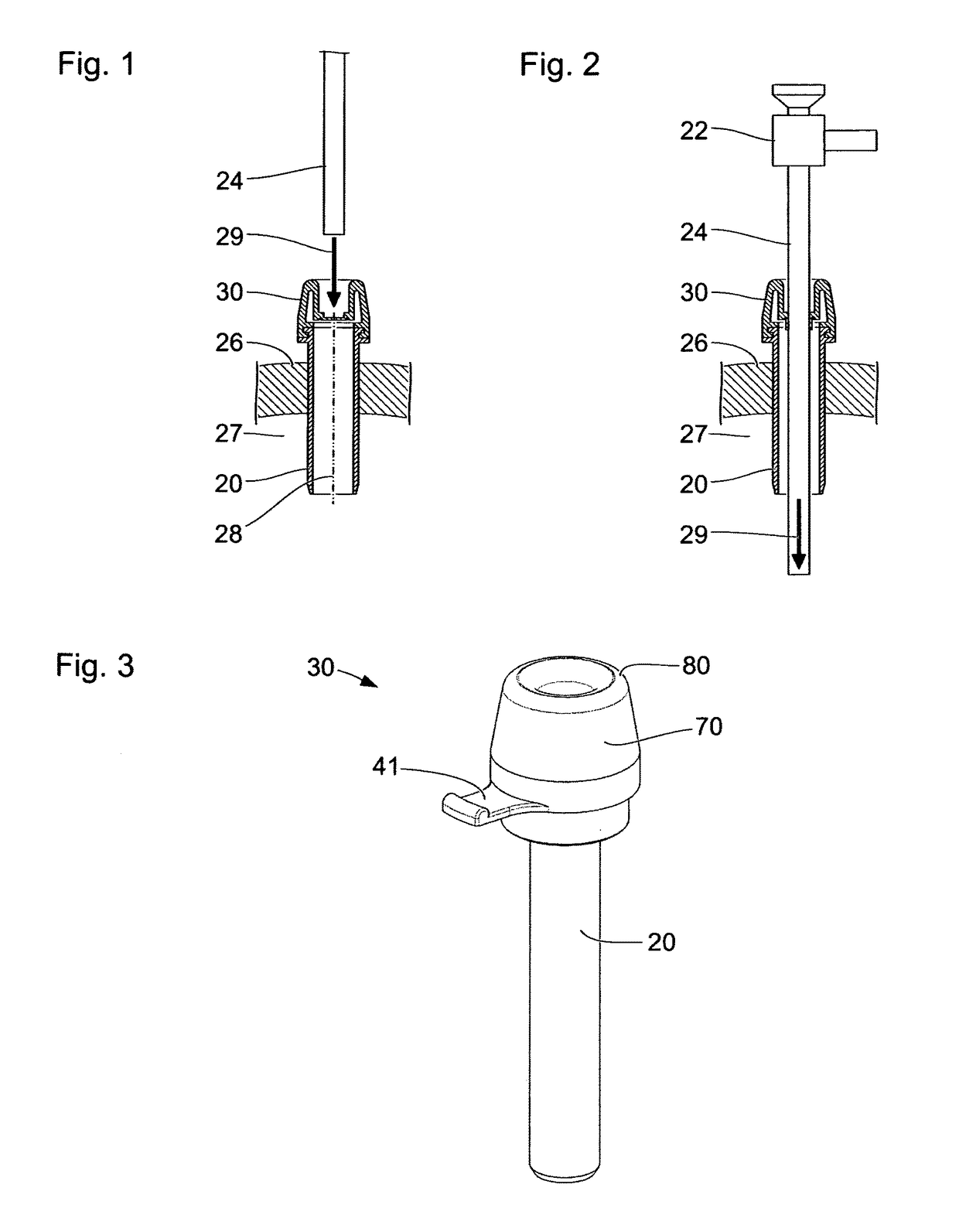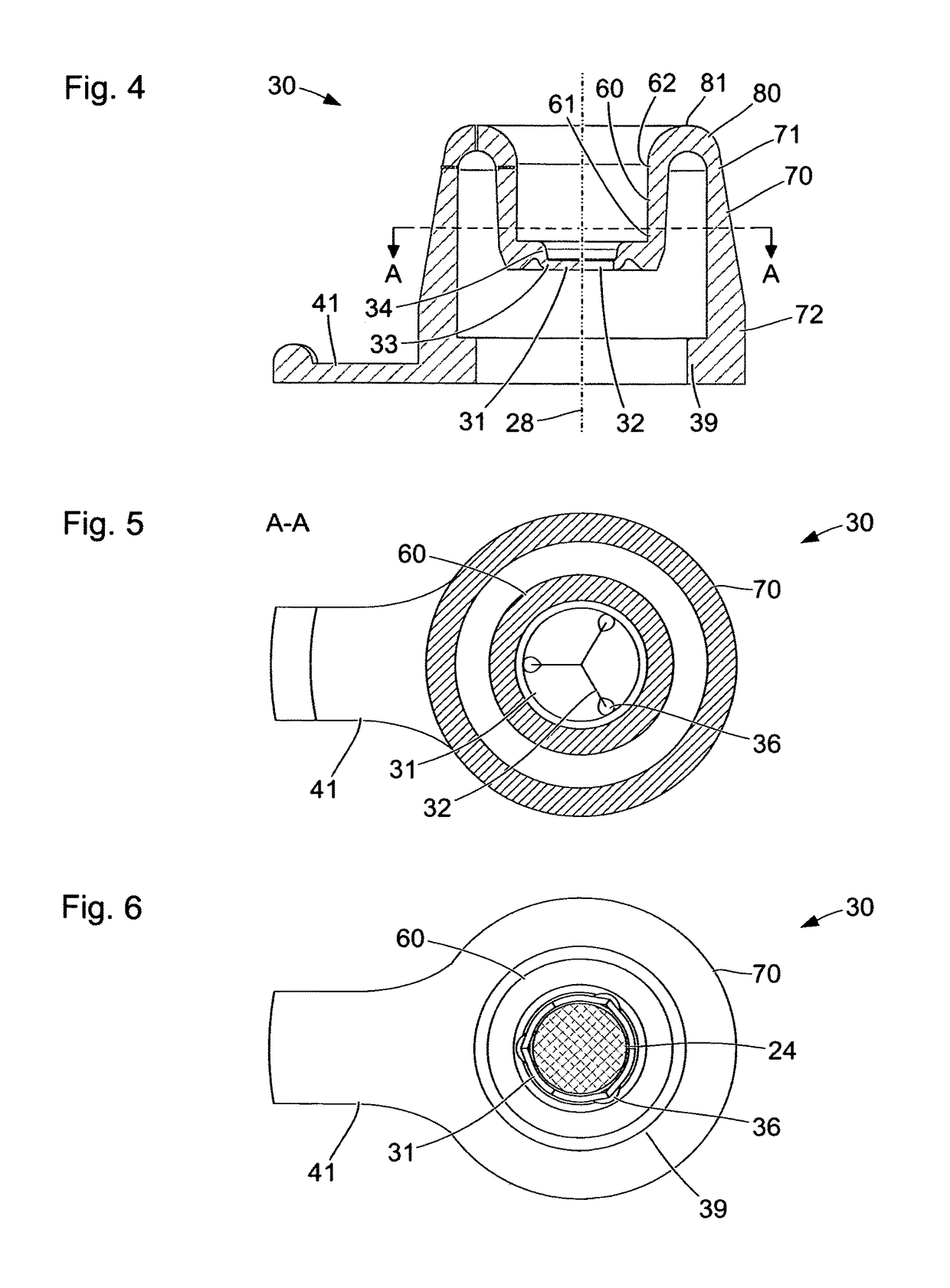Sealing device for sealing a passage for a medical instrument
a sealing device and medical instrument technology, applied in the field of sealing devices for sealing passages of medical instruments, can solve problems such as similar problems, and achieve the effects of reducing the risk of damage to the ring seal or the slit membrane, low force, and high degree of reliability
- Summary
- Abstract
- Description
- Claims
- Application Information
AI Technical Summary
Benefits of technology
Problems solved by technology
Method used
Image
Examples
Embodiment Construction
[0068]FIGS. 1 and 2 show schematic sectional views of a tube 20 of a trocar, which is fitted into an abdominal wall 26 of a patient. Through the lumen of the tube 20, one or more medical instruments can be inserted into a cavity 27 under the abdominal wall 26 of the patient. The tube 20, the abdominal wall 26 and the cavity 27 under the abdominal wall 26 are shown in a section along a plane containing a longitudinal axis 28 of the tube 20. In particular, the tube 20 is at least in part rotationally symmetrical with respect to the longitudinal axis 28. The tube 20 comprises a sealing device 30 at its proximal end outside the cavity 27. Embodiments of the sealing device 30 are described in detail with reference to FIGS. 3 to 8.
[0069]FIGS. 1 and 2 also show a medical instrument 22 with a shank 24. Since the internal design of the medical instrument 22 and of the shank 24 thereof are not relevant as regards the properties of the tube 20 that are described below, only contours of the med...
PUM
 Login to View More
Login to View More Abstract
Description
Claims
Application Information
 Login to View More
Login to View More - R&D
- Intellectual Property
- Life Sciences
- Materials
- Tech Scout
- Unparalleled Data Quality
- Higher Quality Content
- 60% Fewer Hallucinations
Browse by: Latest US Patents, China's latest patents, Technical Efficacy Thesaurus, Application Domain, Technology Topic, Popular Technical Reports.
© 2025 PatSnap. All rights reserved.Legal|Privacy policy|Modern Slavery Act Transparency Statement|Sitemap|About US| Contact US: help@patsnap.com



